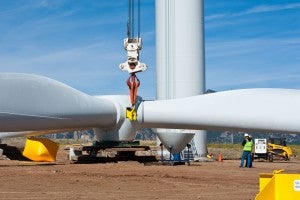 The U.S. economy is wonderfully dynamic. New businesses launch daily, creating jobs and providing tax revenues for schools and police. Innovative technologies are introduced, offering customers more choice and improved services. Sometimes, of course, those new firms and devices replace existing institutions and products.
The U.S. economy is wonderfully dynamic. New businesses launch daily, creating jobs and providing tax revenues for schools and police. Innovative technologies are introduced, offering customers more choice and improved services. Sometimes, of course, those new firms and devices replace existing institutions and products.
Today’s electricity industry is no exception. Technological advances are helping hundreds of new businesses deploy wind turbines and solar panels, build new natural-gas generators, and install monitors and controls that increase the efficiency of buildings and factories. At the same time, uneconomic and often dirty power plants are closing – within the past few years more than 10,000 megawatts of electric capacity in Ohio alone have closed or been announced to close.
Such closures can be good for customers, since they enjoy lower costs from the modern technologies. Closures can also be good for public health and the environment, since old units no longer spew mercury, carbon dioxide, and other harmful pollutants into the air.
Plant closures, however, also impact energy workers and their local communities. As the country’s energy system transitions from coal to cleaner ways of making electricity, companies and policymakers should support and provide resources for those most affected – so everyone may benefit from the clean energy economy.
Supporting communities
When old plants close, power companies often create new jobs in the same communities by building more modern facilities that use existing transmission lines to move energy from the plants to customers. But sometimes, people lose their jobs and local governments lose tax revenue.
Some companies use the threat of job losses when asking states for subsidies and bailouts to keep outdated power plants online. These old power plants cost more to operate and are dirtier than making electricity using newer technology. Rather than support a failing system, utilities and government would be wise to design policies that help everyone transition to the more modern energy system.
[Tweet “How Clean Energy’s Rising Tide Can Lift All Boats”]
Nuclear decommission funds offer one model for managing energy industry transitions: The government requires reactor owners to set aside funds to pay for closure – including dismantling plants, cleaning sites, and storing radioactive waste. Comparable trust funds require excavating companies to clean up the contamination from abandoned coal mines.
Utilities and governments could provide similar assistance to workers and communities when power plants close. Workers could obtain other jobs at the utility or receive outplacement assistance, including the cost for tuition or job retraining. PG&E, for example, recently announced the closure of its Diablo Canyon nuclear reactor and included a commitment to help employees and the community transition. Through a $90 million grant in Pennsylvania, the federal POWER + program is hiring ex-miners to help clean up coal waste and prepare the ground for new developments like housing and bike paths.
Federal lawmakers could also spur investments in efficiency and renewable energy in order to create more clean energy jobs, or help transition coal workers to existing ones. A new study from the Harvard Business Review examined the costs and benefits of retraining coal workers for employment in the fast-growing solar industry, showing there are a wide variety of opportunities – all with attractive annual pay.
Energy transition for all
Our energy system is on unstoppable course to a cleaner grid, and coal is on its way out. It should be state and utility policy, however, to provide a thoughtful transition for the workers and communities in the shadow of abandoned units. This means helping those who benefit from associated tax revenue, including the schools, police, and firefighters, as well as assisting the plant’s workers with acquiring new skills and, more importantly, new jobs themselves.
America’s dynamic economy provides better services at lower costs, which benefits all customers. Dynamism, however, also forces change, which can be disruptive to some. In our evolving energy system, we need to ensure everyone – including the disrupted – gains from the arrival of innovative technologies, entrepreneurs, and new companies.









